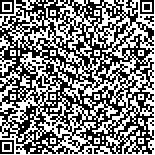|
| 引用本文: | 陈俊男,郭永军,梁健,李永仁,黄亚冬,梁爽.不同养殖方式对皱纹盘鲍养殖效果及养殖水质的影响[J].海洋科学,2020,44(3):104-112. |
| |
|
| |
|
|
| 本文已被:浏览 1582次 下载 988次 |

码上扫一扫! |
|
|
| 不同养殖方式对皱纹盘鲍养殖效果及养殖水质的影响 |
|
陈俊男1, 郭永军1,2, 梁健1,2, 李永仁1,2, 黄亚冬3, 梁爽1,2
|
|
1.天津农学院天津市水产生态及养殖重点试验室, 天津 300384;2.天津市海洋牧场技术工程中心, 天津 300457;3.天津市海升水产养殖有限公司, 天津 300270
|
|
| 摘要: |
| 在天津地区对2.2 cm左右规格的皱纹盘鲍(Haliotis discus hannai)进行试养殖,比较了两种养殖模式(笼养与砖养)、两种养殖密度下鲍的存活与生长情况,以及不同换水频率和不同饲料形状对鲍的生理状态和养殖水质的影响。结果表明:试养殖1个月后,笼养下的鲍存活率(74.4%)低于砖养(84.0%),且低密度养殖下鲍的存活率更高;随着换水频率的增加,鲍的摄食量逐渐增加,养殖水体中氨氮、亚硝酸氮、硝酸氮、化学需氧量的含量均呈减少的趋势;投喂不同形状饲料的组别间养殖水体氨氮、亚硝酸氮含量差异显著。因此,砖养模式更适合于作为天津地区鲍养殖的模式,并且降低密度、提高换水频率有助于改善水质,改良鲍的摄食、存活状况。 |
| 关键词: 皱纹盘鲍 养殖模式 养殖效果 水质 |
| DOI:10.11759/hykx20190624002 |
| 分类号:S966.9 |
| 基金项目:现代农业产业技术体系建设专项资金(CARS49);天津市自然科学基金(18JCQNJC84500);天津市现代产业技术体系贝类养殖岗位(ITTFRS2017013);天津市水产产业技术体系创新团队项目(ITTFRS2017009);广东省水产健康安全养殖重点实验室开放基金(GDKLHSA0806) |
|
| Influence of different culture methods on the feeding, survival, and water quality during Haliotis discus hannai aquaculture |
|
CHEN Jun-nan1, GUO Yong-jun1,2, LIANG Jian1,2, LI Yong-ren1,2, HUANG Ya-dong3, LIANG Shuang1,2
|
|
1.Tianjin Aquaculture Key Laboratory, Tianjin Agricultural College, Tianjin 300384, China;2.Tianjin Marine Ranching Technical Engineering Center, Tianjin 300457, China;3.Tianjin Haisheng Aquaculture Limited Company, Tianjin 300270, China
|
| Abstract: |
| In this study, Haliotis discus hannai with a size of about 2.2 cm was cultured in Tianjin area. We measured and compared the effects of two culture modes (cage and brick culture), different culture densities, different water change frequencies, and different food types on the growth rate, survival rate, and aquaculture water quality of Haliotis discus hannai. After one month of trial culture, the survival rate of abalone in cages (74.4%) was lower than that in bricks (84.0%), and the survival rate of low-density cultured abalone was higher than that of high-density cultured abalone. Increasing the water change frequency caused an increase in the food intake of abalone and a gradual decrease in the amount of ammonia nitrogen, nitrite nitrogen, nitrate nitrogen, and chemical oxygen demand in the aquaculture water. The content of ammonia nitrogen and nitrite nitrogen was significantly different between the pellet-fed and flake-fed groups. Therefore, the brick raising mode is more suitable than cage culture as a model for aquaculture in Tianjin. Furthermore, reducing the culture density and increasing the frequency of water changes help to improve water quality and improve the feeding and survival of abalone in this region. |
| Key words: Haliotis discus hannai factory-aquaculture model culture effect water quality |
|
|
|
|
|
|
